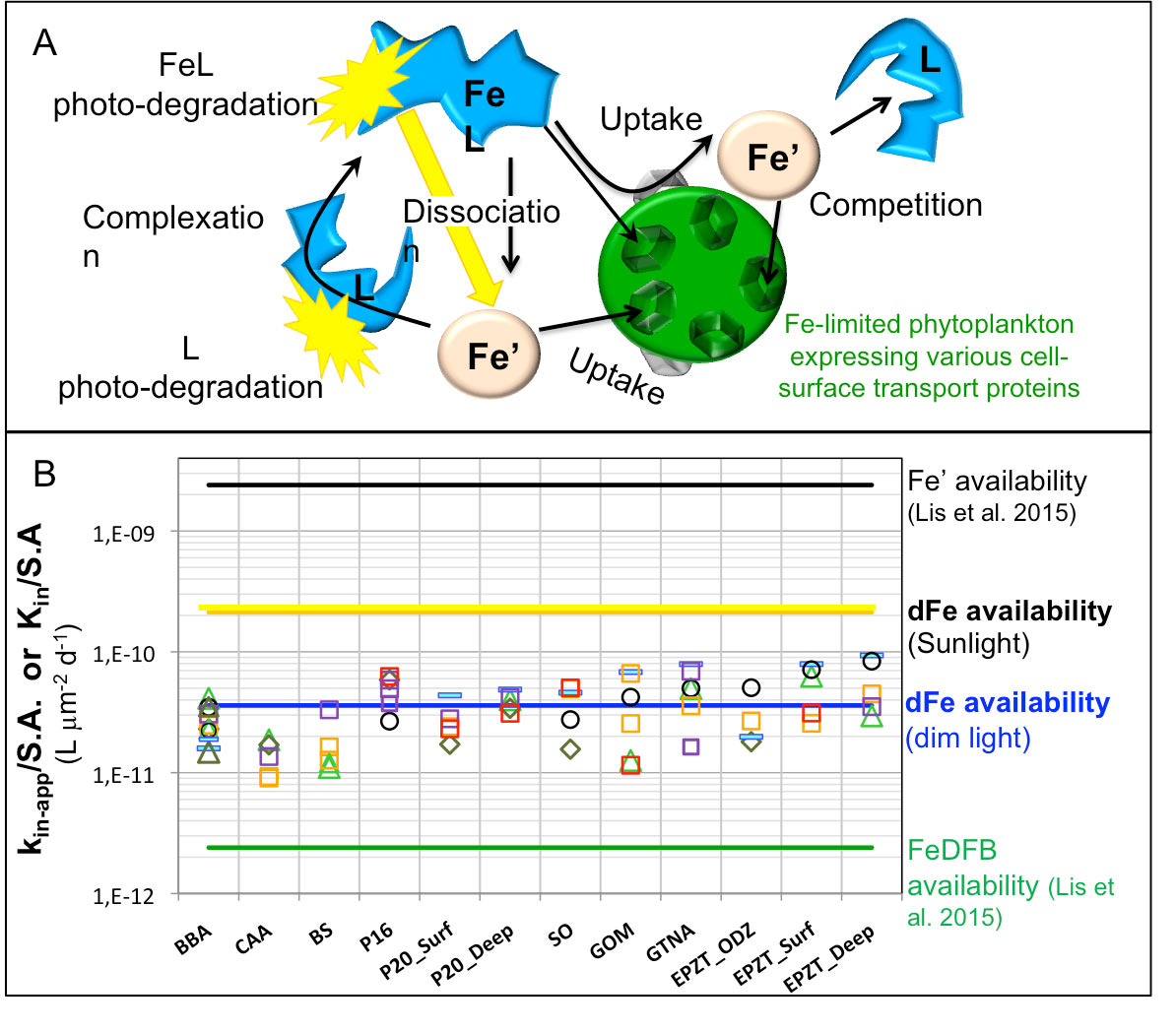Can phytoplankton help us determine the bioavailability of iron in the world ocean?
Joint Science Highlight with US Ocean Carbon and Biogeochemistry (OCB).
Iron (Fe) is a key element to life but in seawater it is present at extremely low concentrations. The scarcity of this important micronutrient limits phytoplankton growth in large swaths of the global ocean with consequences to the marine food-web and carbon cycling. Understanding the acquisition of Fe by phytoplankton is an important process mediating the movement of carbon to the deep ocean or to higher trophic levels. It is hard to evaluate the ability of marine phytoplankton to obtain Fe from seawater since it is bound by a variety of poorly defined organic complexes.
Yeala Shaked and co-authors (2020, see reference below) propose a new approach for evaluating seawater dissolved Fe (dFe) bioavailability based on its uptake rate constant by Fe-limited cultured phytoplankton. Having collected samples from distinct regions across the global ocean, they have measured their properties of organic complexation, loaded these complexes with a radioactive Fe isotope, and tracked the internalization rates from these forms to a diverse set of Fe-limited phytoplankton species. They found that all tested phytoplankton acquired the natural organic complexes at similar rates when accounting for their cell surface area, confirming that multiple, Fe-limited phytoplankton species can be used to probe dFe bioavailability in seawater. Among water types, dFe bioavailability varied by ~4 fold and did not clearly correlate with Fe concentrations or any of the measured Fe speciation parameters. The approach established and verified in this study opens a new way for determining Fe bioavailability in samples from across the oceans, and enables modeling of in situ Fe uptake rates by phytoplankton based simply on measured Fe concentrations.

Reference:
Shaked, Y., Buck, K. N., Mellett, T., & Maldonado, M. T. (2020). Insights into the bioavailability of oceanic dissolved Fe from phytoplankton uptake kinetics. The ISME Journal, 1–12. DOI: https://doi.org/10.1038/s41396-020-0597-3
